Moroccan Mosaics: History, Craftsmanship, and Beauty
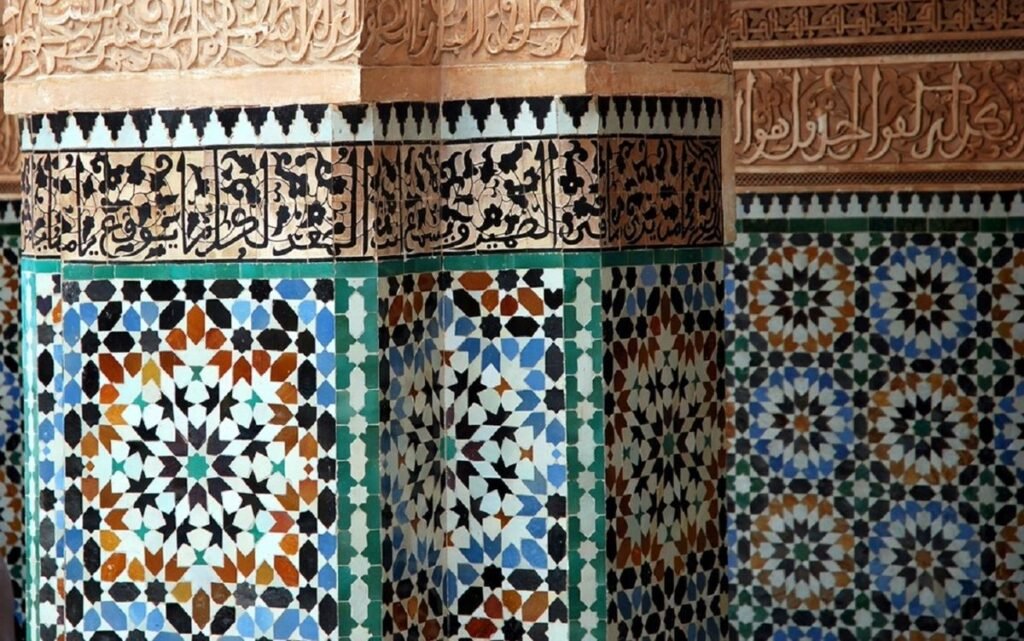
Mosaics, known locally as Moroccan zellige, are an integral part of the cultural and civilizational heritage of the Kingdom of Morocco. This ancient art is more than just decoration; it is a living testament to the country's rich history, the intermingling of civilizations, and the genius of Moroccan craftsmen. Zellige tells stories from the past, embodies artistic and spiritual values, and adds a touch of timeless beauty to buildings, palaces, and mosques.
A historical overview of mosaics in Morocco
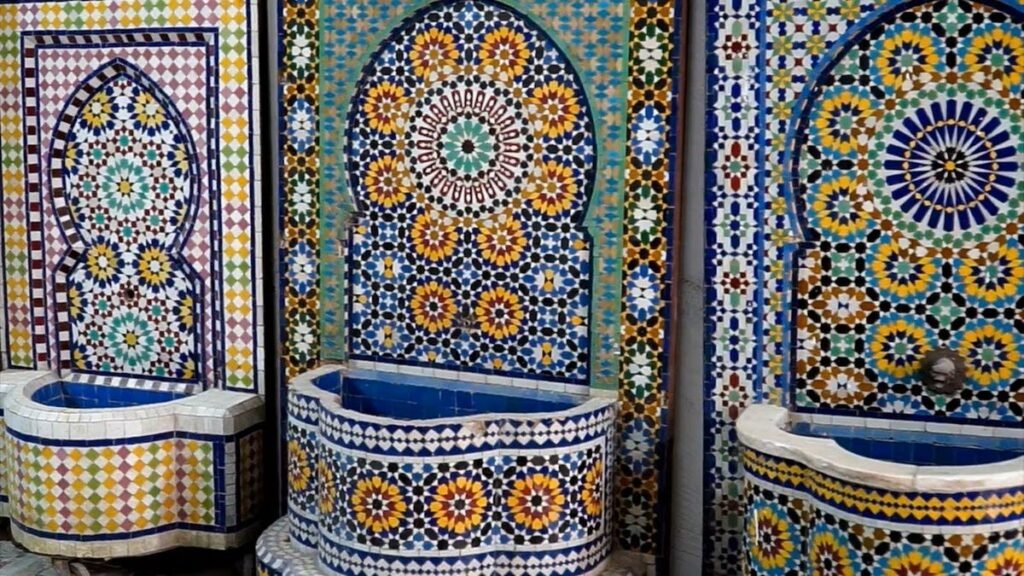
The art of mosaics began to spread in Morocco at the beginning of the Islamic era, particularly in the eleventh century AD, when Muslim artists developed it into a unique art form that distinguishes Moroccan architecture.
This art form was influenced by civilizations that preceded the Islamic presence in Morocco, such as the Roman and Greek civilizations, as evidenced by some archaeological discoveries in ancient sites such as Lixus and Volubilis.
However, the greatest development of Moroccan zellij occurred during the era of the ancient Moroccan empires, such as the Almohads and Marinids, who widely adopted this art to decorate their palaces, madrasas, and mosques. The city of Fez is considered the beating heart of this art, where craft schools flourished, preserving the secrets of zellij craftsmanship across generations, passing them down from father to son.
Moroccan Zellige Making: Stages and Processes
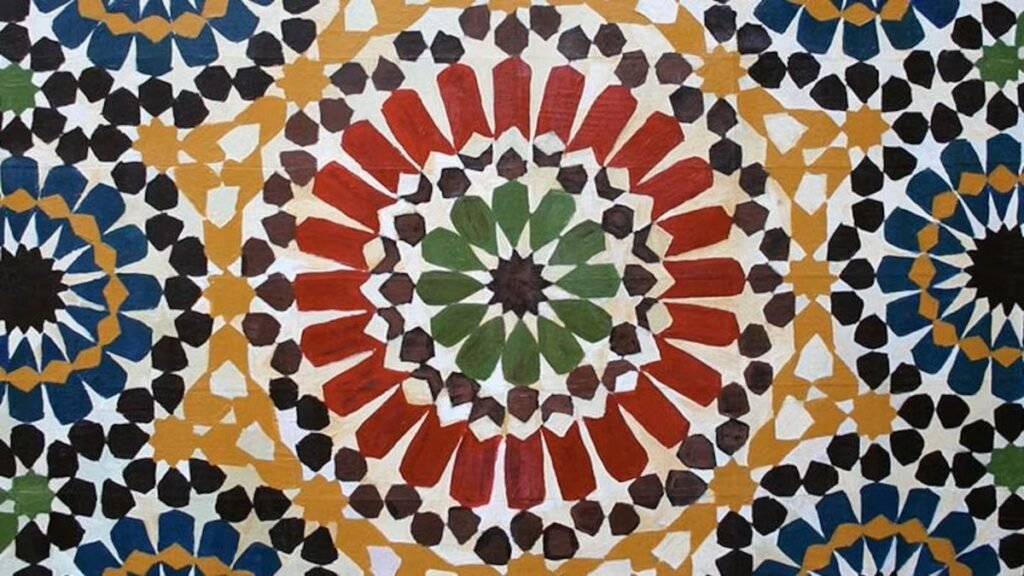
Making Moroccan zellige is a complex process that requires great skill and patience, and goes through several basic stages:
* Ceramics industry: The process begins with the preparation of red clay extracted from specific regions in Morocco. It is shaped into square or rectangular slabs and then baked in traditional ovens to become ceramic tiles.
* Glazing (cladding): After baking, the panels are coated with a white or colored glaze, then returned to the oven for a second baking until they achieve the desired luster.
* Cutting (slitting): The glazed panels are cut using a special hammer and a small chisel (mankhār) into very small geometric pieces, called "mosaics" or "octagons." This is where the craftsman's ingenuity lies, as each piece must be perfectly even and fit together to form the desired pattern.
* Assembly (installation): The master craftsman assembles the cut pieces onto the floor or wall. This stage requires a deep knowledge of complex geometric patterns, as he assembles various geometric shapes such as stars, polygons, and zigzag lines to create a complete artwork.
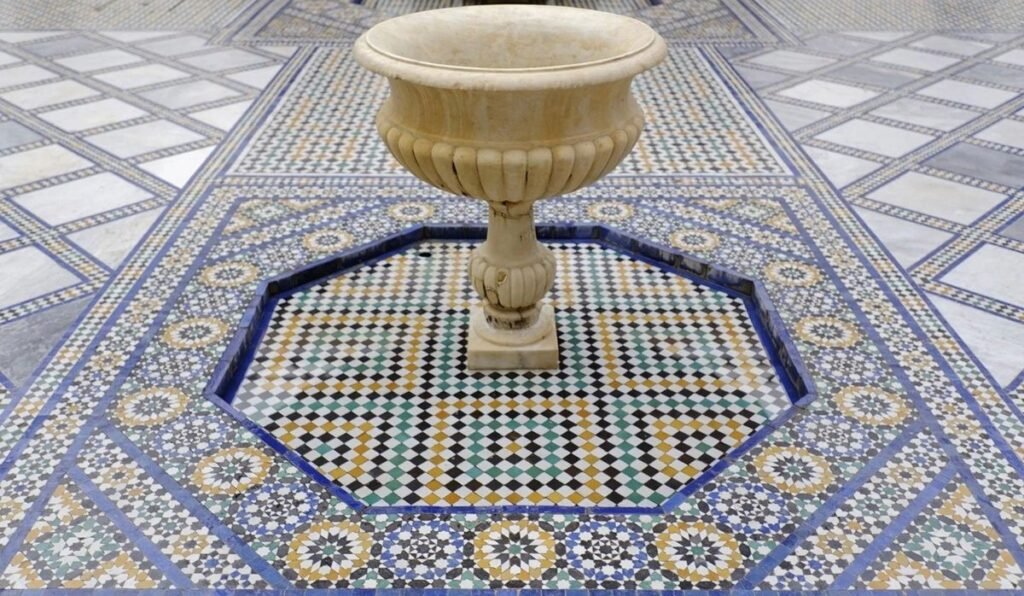
Types of Moroccan mosaics
Moroccan mosaics vary in their geometric patterns and colors. The most prominent types include:
* Municipal tiles: It is the most popular type, and is characterized by its complex, interlocking geometric patterns that form stars and polygons with varying numbers of vertices.
* Andalusian mosaics: These mosaics were heavily influenced by Andalusian art and feature floral motifs and delicate geometric shapes.
* Fez Zellige: It is famous for its decorations made of very small pieces, and is often used in mosques and palaces.
* Rabat Zellige: It features light colors and calm decorations, reflecting the character of the ancient city of Rabat.
Mosaics in modern Moroccan architecture
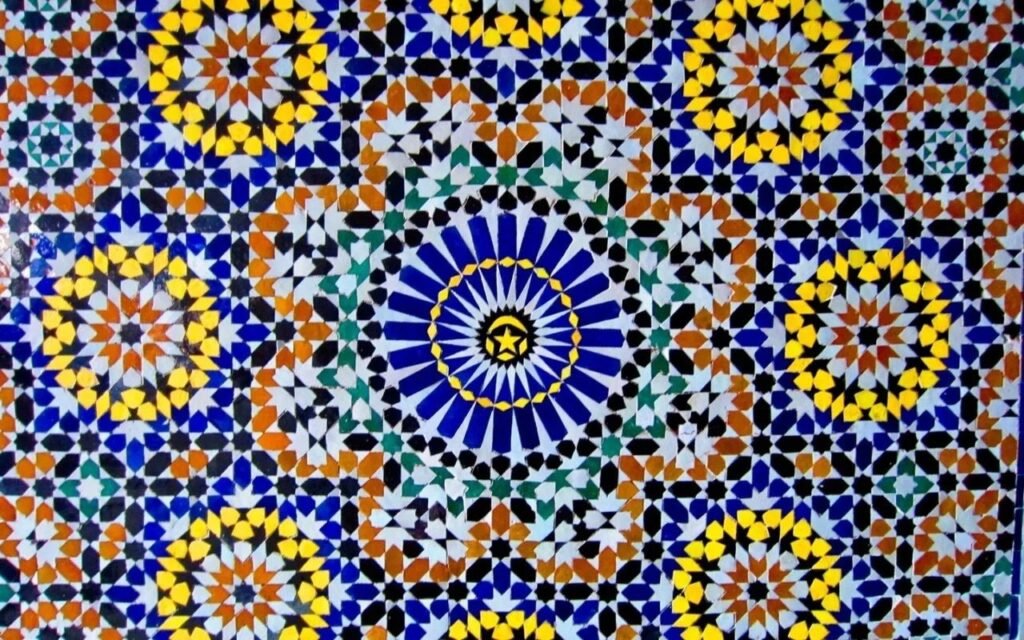
Despite hundreds of years of history, Moroccan zellige art remains highly valued. It has not disappeared, but has continued to evolve and become an integral part of modern Moroccan architecture. It is also exported worldwide, contributing to the promotion of Morocco's rich heritage.
In conclusion, Moroccan mosaics are not merely a decorative art form; they are a symbol of Moroccan identity and a testament to the skill and creativity of traditional craftsmen, who continue to create, telling stories from the past, adding beauty to the present, and preserving a heritage that will endure for generations.





